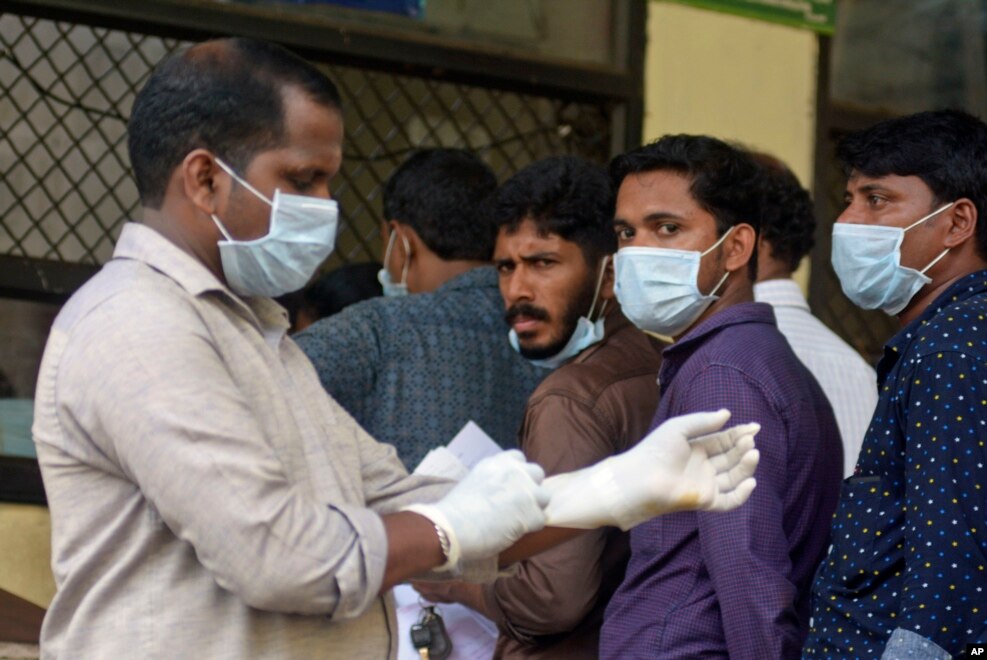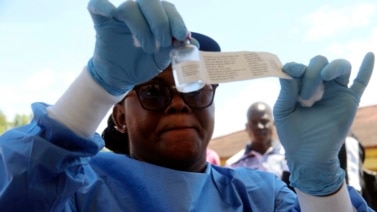
From VOA Learning English, this is the Health & Lifestyle report.
An outbreak of a brain-destroying virus is currently happening in the Kerala state of India.

The number of people who have died from Nipah is relatively small. Officials from India’s Ministry of Health and Family Welfare said in a statement to the press that this is not a “major outbreak” and is only a “local occurrence.” They cannot confirm the origin of the outbreak. But they can confirm that it is spreading between humans.
So far, the Nipah virus has killed more than a dozen people. The victims include a 31-year old nurse in Kerala. Lini Puthussery was part of a team treating the first Nipah patients. She was also a wife and the mother of two young children. Her body was cremated quickly so the infection would not spread.
Health officials are most concerned about the high mortality rate of the disease. The World Health Organization (WHO) lists the Nipah virus as a developing disease that could cause a global pandemic. Ebola and Zika are also on this list.
Symptoms of Nipah
Those who contract Nipah show signs of the disease quickly. Early signs include fever, sleepiness, vomiting and mental confusion.
An infected person may also suffer from a cough or have difficulty breathing. As the disease progresses, signs often include uncontrollable shaking and encephalitis, or swelling of the brain.
Experts at the WHO say these symptoms can progress to a coma within 24-48 hours.
Transmission
The Centers for Disease Control and Prevention in the United States explains on its website that “transmission of Nipah virus to humans may occur after direct contact with infected bats, infected pigs, or from other NiV (Nipah virus) infected people.”
The WHO includes all animals in its explanation. “Nipah virus can be transmitted to humans from animals (such as bats or pigs), or contaminated foods and can also be transmitted directly from human-to-human.”
Brief History
The CDC explains that the Nipah virus is named for a village in Malaysia. Nipah was first discovered there in 1999. At that time, the virus mostly infected pig farmers and those who had contact with pigs. At least 300 people in Malaysia and Singapore were infected, and more than 100 people died.
The CDC adds that, to control that outbreak, officials killed more than one million pigs. In this outbreak bats infected pigs and then pigs infected humans. There was no occurrence of person-to-person transmission in this outbreak.
However, in Bangladesh and India the CDC states that person-to-person transmission is “regularly reported.”
Its site adds that this “is most commonly seen in the family and caregivers of Nipah virus-infected patients.” In this area, people can also get Nipah from contact with infected bats.
The Science News website reports that there was a Nipah outbreak in Bangladesh from 2001 to 2007. People caught the disease after drinking contaminated fruit fluids that virus-carrying bats had also drank.
There is no cure for Nipah or vaccine to protect against it.
And that’s the Health & Lifestyle report. I’m Anna Matteo.
Anna Matteo wrote this story for VOA Learning English. Kelly Jean Kelly was the editor.
Words in This Story
mortality - n. the number of deaths in a given time or place
cremate - v. to burn (the body of a person who has died)
contract - v. to become ill with (a disease)
pandemic - n. an occurrence in which a disease spreads very quickly and affects a large number of people over a wide area or throughout the world
occurrence - n. something that happens
contaminate - v. to make (something) dangerous, dirty, or impure by adding something harmful or undesirable to it
encephalitis - n. medical inflammation of the brain that is caused especially by infection with a virus (such as herpes simplex or West Nile virus) or less commonly by bacterial or fungal infection or autoimmune reaction
coma - n. a state in which a sick or injured person is unconscious for a long time
transmission - n. the act or process by which something is spread or passed from one person or thing to another
vaccine - n. a substance that is usually injected into a person or animal to protect against a particular disease


